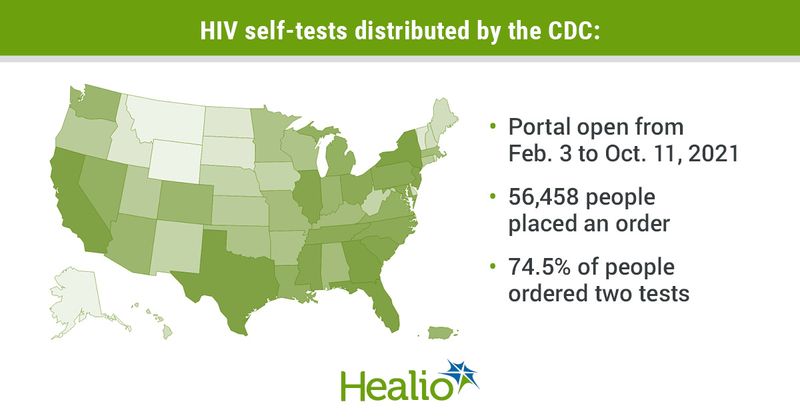CDC: 100K HIV self-tests requested in 8 months
Click Here to Manage Email Alerts
More than 56,000 people living in areas of the United States with a high burden of HIV ordered at least one HIV test from a CDC mailing program in 8 months last year, according to data reported Wednesday.
The program was created to support of the federal Ending the HIV Epidemic initiative launched in 2019 by accelerating the identification of undiagnosed HIV infections.

Pollyanna R. Chavez, PhD, an epidemiologist at the CDC, said during the virtual Conference on Retroviruses and Opportunistic Infections that 100,000 tests were ordered last year.

“We learned that mailing free HIV self-tests to internet-recruited men who have sex with men increased awareness of infection among intervention participants,” Chavez said during a presentation.
The CDC implemented a marketing campaign to reach Black and Hispanic gay men, transgender women and Black women living in areas of the country with a high burden of HIV. The campaign included a link to an online test-ordering portal.
People with a known HIV infection or who have been taking PrEP were encouraged to share their self-test instead of using it themselves.
The test order portal was open from Feb. 3 through Oct. 10. A total of 56,458 people placed an order, and 74.5% ordered two tests, Chavez and colleagues reported. More than half of orders (55%) were placed in locations associated with the federal initiative, and 82.2% of people responded to a survey after ordering.
Of those who filled out the survey, 26% reported no prior HIV testing, whereas 33% reported their last HIV test had been more than a year beforehand. Overall, 4.9% of respondents reported PrEP use, and 1.6% reported testing positive for HIV before ordering a test.
More than a third of respondents (36.7%) were white, 26.8% were Hispanic and 24.8% were Black. Most participants (69.4%) were men, 26% were women and 4.6% identified as another gender, including 1.4% transgender women.
According to Chavez, most tests were ordered by people aged 18 to 44 years.
“This program highlights the demand for HIV self-tests, and they are appealing even to persons who had never previously tested for HIV,” Chavez said.

